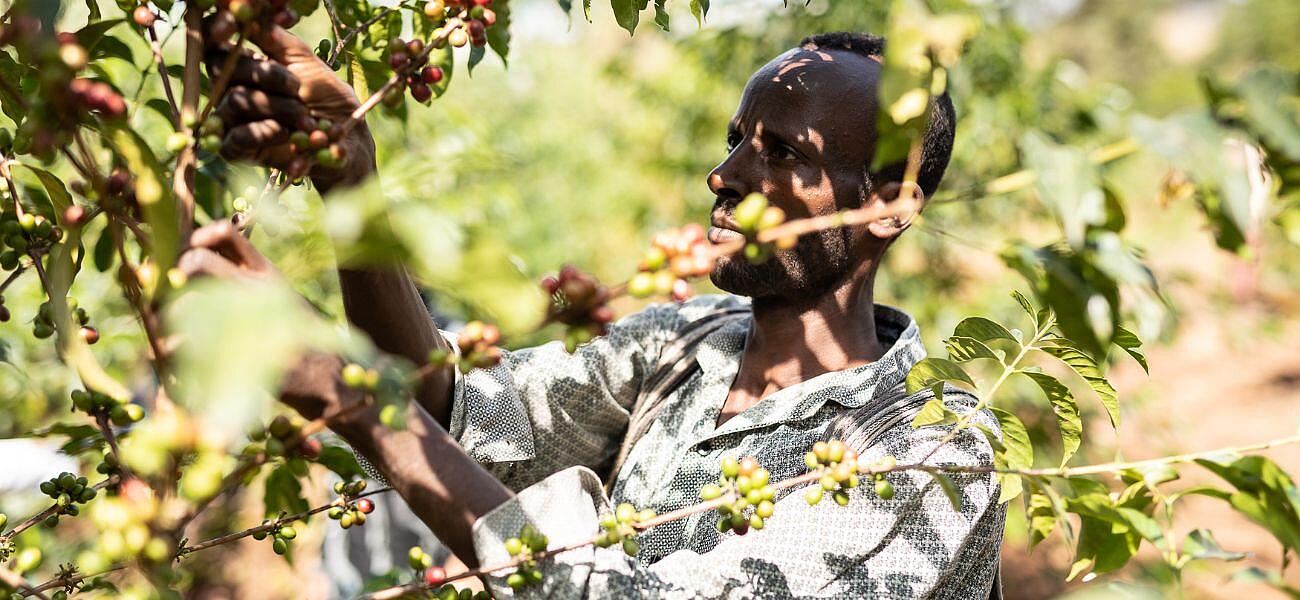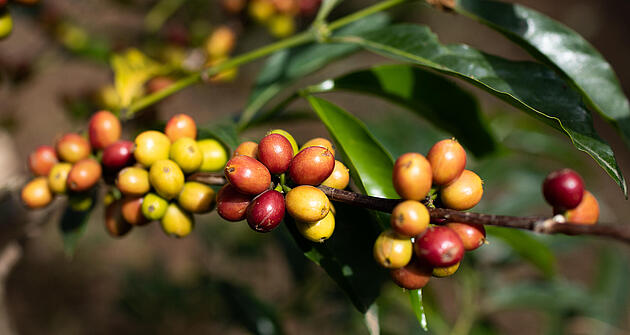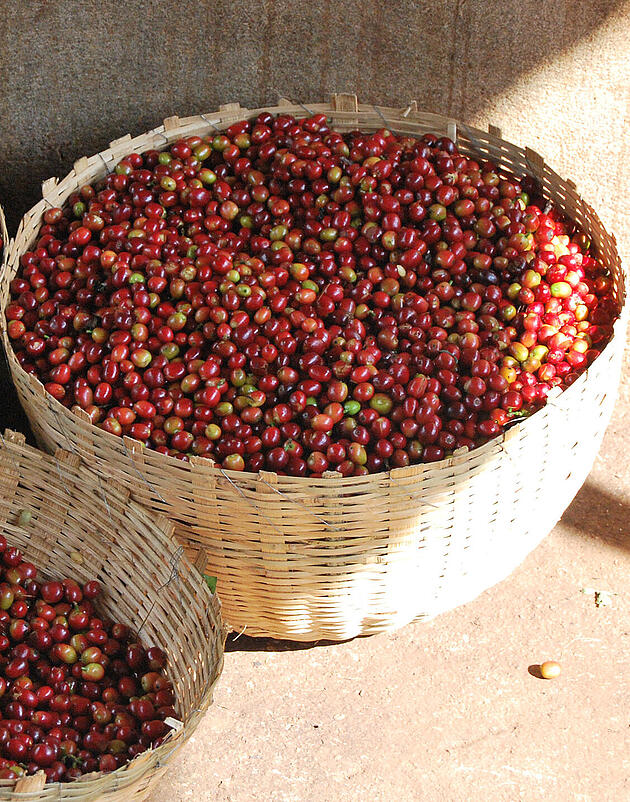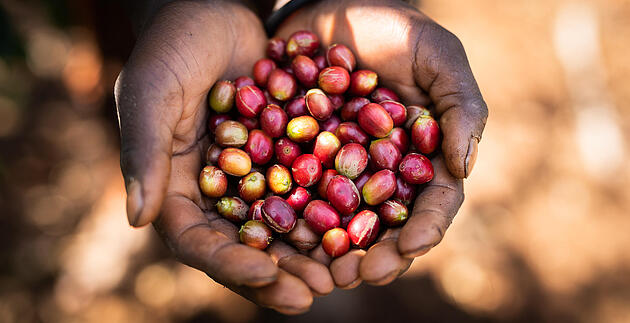It’s a phenomenon we see only with the coffee cherry: blossom flowers, unripe and ripe fruit growing simultaneously on the same plant. That’s why at any given time of the year, there’s a coffee harvest taking place somewhere in the world. Here, we explain what happens during the harvest.
Coffee: a sensitive plant
The coffee plant requires lots of care and attention before harvesting can begin. It needs sufficient rainfall and plenty of shade, and can’t deal with strong winds or extreme heat and cold. The ground should be rich in nutrients and able to retain water. When grown in cooler regions at higher altitudes, coffee cherries ripen more slowly, which means they have more time to develop their flavours, aromas and, in particular, their acidity. That’s why for many of our coffees, we rely on the distinctive quality of highland arabicas from Ethiopia.
Coffee ripeness: when is the perfect moment for harvesting?
For the best-quality coffee, the coffee cherries need to be at peak ripeness when harvested. At this stage, the coffee’s aromas are particularly well developed and the beans inside the cherry are just right for further processing. But timing this just right is not easy!
The harvesting period for coffee cherries is usually two to three months, and even four months for some varieties and locations. The time at which the harvest begins depends on where the cherries are grown. North of the equator, the harvesting season typically lasts from September to December, while to the south it can stretch from April or May to August. And there’s activity between those times, too. Close to the equator, there is virtually no significant period of time between the first and second bloom of the coffee tree – and therefore the first and second harvests. For most of the year, there’s a coffee harvest taking place somewhere in the world. If the coffee cherries are unripe, they lack flavour and aroma, while if they’ve ripened too much, they risk falling victim to mould, pests or rotting. That’s because the coffee cherry contains sugar and has a water content of about 60%, meaning that overripe fruit will quickly deteriorate and decay.
So there is no perfect time to harvest all coffee cherries. A certain branch may also contain ripe and unripe cherries at the same time. The following three harvesting methods have become established to ensure that coffee farmers aren’t left empty handed.
Hand-picking
In order to obtain the highest quantities of red, ripe coffee cherries, high-quality arabica coffees in particular are hand-picked – a method often referred to as “picking”. Once a coffee cherry begins to ripen, it becomes overripe in 10–14 days. For this reason, pickers will go through the plantation multiple times with their baskets for as long as worthwhile quantities of beans are still ripening. The amount that can be picked by hand can vary between 50 and 120 kg of coffee cherries per day. Fifty kilos of ripe coffee cherries are required for six to seven kilos of roasted coffee.
Strip-picking
The amount each person can collect is significantly higher if the coffee cherries are not picked individually but stripped off the branch with one swift movement of the hand. This method is called “strip-picking” and allows each worker to collect up to 250 kg of coffee fruit a day. Both ripe and unripe fruit fall directly onto cloths or tarpaulins on the ground, where they are subsequently collected. While strip-picking is faster at first, some of this benefit is lost due to having to clean and sort the beans later on.
Machine harvesting
On very large, predominantly flat plantations – for example in parts of Brazil – the coffee is harvested with machines. Similar to a vineyard, the coffee trees are arranged in rows, allowing the machines to drive through with vibrating combs and shake the cherries from the branches. The fruit falls either into an integrated container on the machine or onto tarpaulins and cloths on the ground. This method also has higher levels of coffee-bean wastage when compared to hand-picking.
Bad beans? No way!
One of the secrets of Dallmayr coffee’s unmistakable character lies in the green coffee itself – long before the beans are roasted. Our coffee experts purchase only the finest highland coffees from the world’s best growing regions – coffees that are highly aromatic and diverse. The most important coffee-sourcing countries for Dallmayr are Ethiopia, Papua New Guinea, Colombia, Peru and Brazil. Here, 70% of our coffees are hand-picked, 20% strip-picked, and only 10% are machine harvested.



